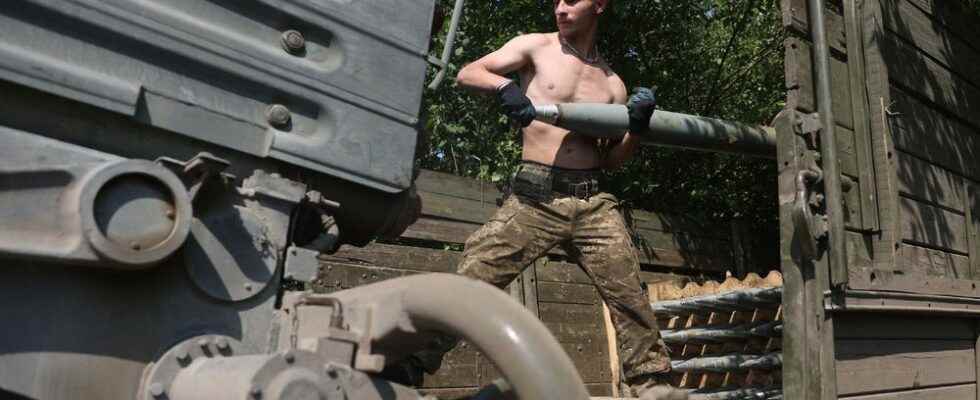On the American side, 18 additional M777 howitzers, 36,000 shells, two Harpoon anti-ship missile launchers, four Himars multiple rocket launchers… On the European side, the delivery of three British multiple rocket launcher systems is “imminent”, according to the minister of Defense, Ben Wallace. Berlin is donating three similar systems. And Emmanuel Macron, visiting kyiv with his German and Italian counterparts, for his part declared to add six “additional Caesar” guns to the twelve already delivered.
Efforts hailed by Ukrainian President Volodymyr Zelensky. But it is clear that this list is well below the requests made by kyiv. On June 13, the adviser to the Ukrainian president, Mykhailo Podolyak, had thus published on Twitter a list of the armaments hoped for to be able to “end the war”. This included “1,000 155 mm caliber howitzers, 300 multiple rocket launchers, 500 tanks, 2,000 armored vehicles and 1,000 drones.” It is off the mark.
These new weapons “may slow down a bit the nibbling of Ukrainian territories by Russia, but it is not enough to prevent it”, estimates Samantha de Bendern, researcher specializing in Russia at Chatham House, a London think tank. “When we count all the cannons that have been delivered by the West since the beginning of the conflict, we arrive at less than 200 pieces of artillery. It is ultimately quite a few, when we know that the Ukraine had a stock about 10 times greater before the war,” explains Marc Chassillan, military engineer and specialist defense consultant.
A Ukrainian soldier loads a rocket battery near Izyum, south of Kharkiv, on June 11, 2022 in eastern Ukraine.
afp.com/Anatolii STEPANOV
In fact, Moscow retains a clear advantage in artillery. “Putin’s forces send about 50,000 shells to the Ukrainian positions every day. Opposite, the soldiers can only respond with 5,000 to 6,000 shells”, points out Samantha de Bendern. A shortage of means which kyiv makes no secret of.
In an interview at Guardian dated June 10, the deputy head of Ukrainian military intelligence, Vadym Skibitsky estimated that the Ukrainian army had only “one artillery piece against 10 to 15 Russian artillery pieces”. And to add: “Everything now depends on what [l’Occident] gives us.”
Lean western stocks
Similarly, Ukrainian Deputy Defense Minister Anna Maliar said four days later that her country had received “only about 10%” of the weapons it needs. Problem: Western reserves are starting to run out after four months of conflict. The American Chief of Staff, General Mark Milley, thus indicated on June 15 that the United States had delivered more than 6,500 Javelin missile launchers, i.e. more than a third of their stocks, among the approximately 97,000 anti-tank systems provided to Ukraine by the international community.
“Western armies, including the American army which is nevertheless the best endowed, are beginning to reach the limits of what they can reasonably give without endangering their own capacities, points out Marc Chassillan. For more than 25 years, the operations carried out by Western armies were relatively inexpensive in ammunition and military equipment: the endowments were therefore not adapted to a high intensity conflict, such as that which we see in Ukraine. .”
At the same time, the stretching of the supply line – more than 1,200 km between the Polish border and the front line in the Donbass – does not facilitate the delivery of the various materials. Beyond the necessary training time for Ukrainian soldiers in the new systems provided to them, logistical problems are slowing down the arrival of certain weapons promised for several months. The delivery of the Cheetah anti-aircraft tanks, announced in April by Berlin, could thus only take place in July, for lack of available ammunition…
